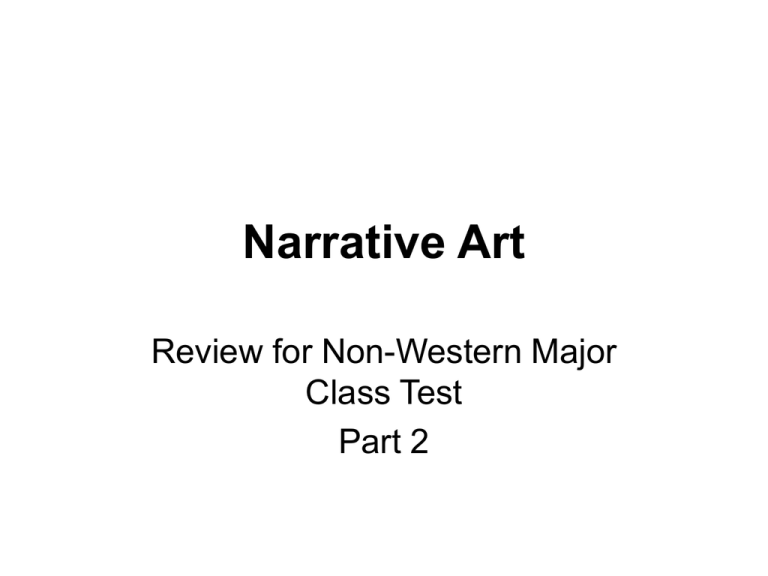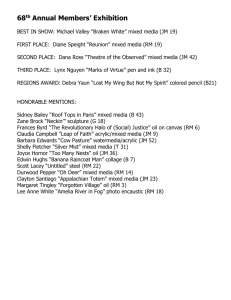How Art Conveys Power and Authority
advertisement

Narrative Art Review for Non-Western Major Class Test Part 2 What is the PURPOSE of the story? –To entertain –To persuade (propaganda) –To teach religion –To teach history –To teach morals –To explain the natural world –To glorify (the ruler, a “hero” etc.) HOW is the story told? –A single scene (explain WHY that scene: Most climatic moment? During some important action? After the outcome of the story is resolved so we see the “moral”?) –Continuous narrative, where we see several moments in the same frame –Registers, where we see the story laid out like a story board. –Single long panel, like a frieze or the Bayeux Tapestry –Combination of text and images HOW does the artist SHAPE the viewer’s response to the story and the figures in the story? To make us ADMIRE the key figure(s) or see them as HEROIC, the artist may use • • • • • • • • • Hieratic scale Centrality in the composition Higher relief, in relief sculpture Idealization Symbols Power of gaze Calm facial expression Light falling on key figure Superhuman characteristics (like multiple arms for Indian deities) HOW does the artist SHAPE the viewer’s response to the story and the figures in the story? To make us see a figure as BAD, the artist may use • Distortion/exaggeration of figure, features, expression, gestures • Hieratic scale HOW does the artist SHAPE the viewer’s response to the story and the figures in the story? To cause us to see the story as MIRACULOUS, the artist may use • Hieratic scale • Dramatic lighting • Unrealistic elements (angels flying, multiple arms, a baby being born from its mother’s side, flying elephants, etc) HOW does the artist SHAPE the viewer’s response to the story and the figures in the story? To communicate the MOOD, the artist will use • • • • • • Balance/imbalance Chaos/order Symmetry/asymmetry Facial expressions, gestures, and stances Color Lines Good vs. Evil: • Hindu sculpture of Durga Defeating the Buffalo Demon/Gentileschi, “Judith Beheading Holofernes” • Hindu sculpture of Durga Defeating the Buffalo Demon/Bernini, “David” • Hindu sculpture of Durga Standing on the Buffalo Demon (AFTER she’s killed him)/Donatello, “David” Miraculous Birth: • “Queen Maya’s Dream” (being impregnated with the Buddha by the White Elephant), 2nd BCE, central India/Campin’s “Annunciation,” central panel of Merode Altarpiece, 15th c • “The Birth of the Buddha,” Gandharan, 2nd c./ Geertgen Tot Sint Jans, Nativity, 1490 War: • Hindu bas relief on temple wall, “Durga defeating The Buffalo Demon,” south India, 7c CE; Picasso, Guernica, 1937 • Akkadian, Victory Stele of Naram-Sin, ~2200 BCE and Picasso, Guernica, 1937 OR Goya, The Third of May, 1808, 181415 How does this work of art convey that particular culture’s notion of what constitutes narrative? How does this work of art convey that particular culture’s notion of what constitutes narrative?




